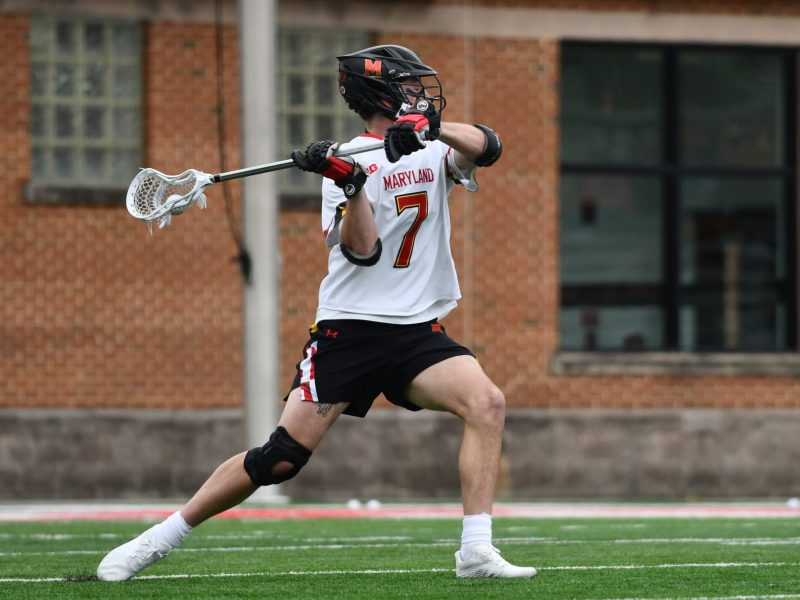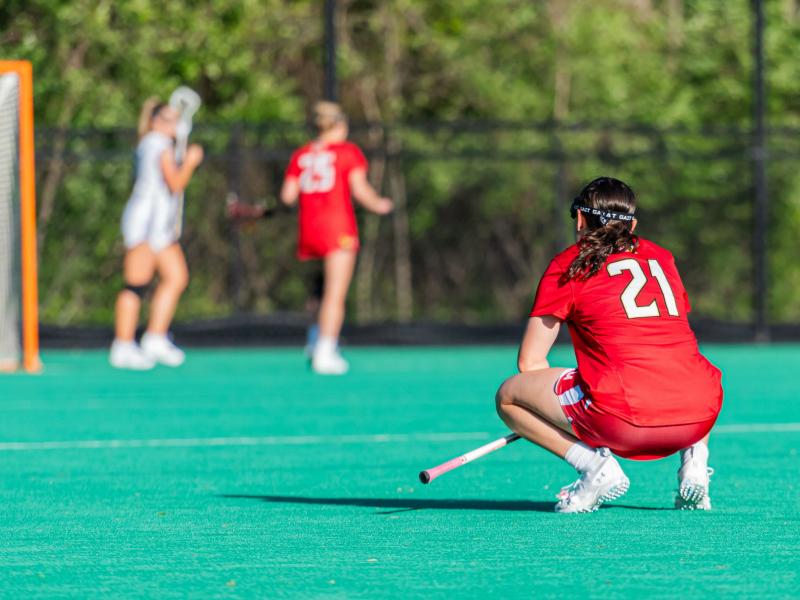
A March Madness bracket isn’t so complicated for a group of graduate students, who used an experiment in quantum mechanics to make genuinely random predictions for the NCAA Tournament. The students are finding their brackets (like the one above) are in the lead against those filled out the traditional way.
Building a March Madness bracket is a delicate process — as people mull over their picks, they might use logic and reason, superstition and bias or even blind hope.
But this year, some students have chosen to leave their brackets up to chance, or rather, quantum mechanics. In the basement of the computer science building, a group of about 20 graduate research assistants are using a theory of randomness to predict what teams will make it to, and prevail in, the Final Four.
And so far, it may be working, said David Hucul, a fourth-year graduate student in one of the five lab rooms participating in the physics-fueled experiment this month. Groups of about four research assistants in different labs each created at least one bracket based on a quantum mechanics experiment, which elicits purely random results. To measure the method’s effectiveness, several research assistants contributed personal brackets made the old-fashioned way. In an online pool, brackets based on the physics experiment are in the lead, Hucul said.
“We’re losing to random chance,” he added.
More than two years ago, Hucul and postdoctoral researcher Susan Clark developed the idea of applying an existing experiment to March Madness. The process they chose involves measuring how much energy a single atom happens to emit in a highly advanced experiment: either an above- or below-average amount. By assigning each basketball team in a matchup to one of those outcomes — above or below average energy — research assistants can build a bracket.
“Why not make our experiments participate in the March Madness?” Hucul said. “We spend all this time down here all day long, and we spend all day looking at this thing.”
The field of quantum mechanics lends itself to the NCAA Tournament surprisingly well — the principle behind the experiment is as simple as a coin toss, said physics professor Chris Monroe, who oversees the five quantum mechanics labs. The only difference is the experiment takes place in a vacuum, so the results are genuinely random, Monroe said.
“Quantum mechanics is different — randomness is intrinsic. It comes with the theory,” Monroe said, adding that even Albert Einstein failed to provide reasoning for this.
But so far, Hucul and Clark are having some success. They made two brackets based on quantum mechanics, including one that predicts a winner in No. 9-seed Wichita State. The Shockers are not only still in the running but also beat La Salle on Thursday night. Another bracket had the Pittsburgh Panthers coming out on top, though the team fell in the tournament’s round of 64.
Looking at the process, Monroe and Hucul both admitted physics may not hold the key to choosing the winning bracket, in part because a team that performed badly throughout the season gets equal weight as a top-seeded program. However, No. 1 seeds have never lost in the round of 64.
“Maybe you don’t even want to pick randomly,” Monroe said. “In fact, I would say that’s a pretty poor bracket if you pick randomly.”
Tyler Brooke, a freshman enrolled in letters and sciences, said he tries to use statistics from past tournaments to predict the likelihood of upsets for his bracket. Still, he recognizes the tournament results involve a lot of luck.
“It’s kind of random — it’s hard to pick an upset,” he said. “It depends who’s playing well that day.”
Some students said they base their brackets off the nature of programs’ tournament histories, such as Louisville, which has been to the Elite Eight four times since 2005, and Georgetown, which has seen early upsets in each of its past five NCAA tournament appearances.
“Certain coaches, once they get to the tournament, they sort of turn it up for their team,” said Marqus Nixon, a sophomore economics major. “I look at is as more of a coach’s game once it gets down to the tournament.”
When looking at the physics students’ brackets, Nixon said it would be interesting to follow their predictions.
“It’s really cool because everyone has their unique way of picking teams,” Nixon said.
For now, Monroe’s research assistants are waiting to see which method prevails from the basement of the computer science building. Where Hucul, Clark and lab partner Volkan Inlek work, wires stretch across the room and every inch of space is taken up by equipment. In the middle of their lab, mirrors and lenses are scattered across a table, all directing light toward a vacuum — the same technology they use to decide each bracket.
Under Monroe’s direction, students conduct research on a variety of quantum mechanics projects, such as the development of the first complex quantum computer. Among the five labs, students and professors have millions of dollars worth of equipment at their disposal, Monroe said.
“There are really very few comparable places for this, and I’m including MIT, Stanford and Harvard,” Monroe said. “This is world-class stuff.”
However, Monroe encourages the brackets each spring as a “light-hearted” experiment.
“Graduate school can be a grind, but we make fun when we can,” Monroe said with a laugh. “Work hard, play hard.”



